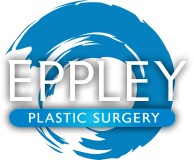Your Questions
Your Questions
Q: Dr. Eppley, I am trying to find solutions to reconstruct my face after permanent teeth extracted for braces. I have attached some photographs. hope it helps. What I want to achieve is more fullness and proyection to my face, like I used to have before the extractions. If you can give me any suggestion I’ll appreciate it.
A: Thank you for sending your pictures. Knowing that you probably had your maxillary bicuspids extracted for orthodontics would indicate that you have some paranasal flattening and even some premaxillary deprojection as well as a more obtuse nasolabial angle. All of this would have resulted from pulling the anterior maxilla back into the extraction spaces. That could be improved by the placement of a combined premaxillary-paranasal implant, adding about 5 to 7ms anterior projection of the maxilla and the base of the nose, thus pulling this middle part of the face forward.
Dr. Barry Eppley
Indianapolis, Indiana
Q: Dr. Eppley, There is no much information out there on paranasal implants. You are such treasure trove of knowledge so I will ask you this question. Someone on realself asked me whether my paranasal implants were uncomfortable, and I told her that they aren’t. This got me wondering, what exactly is the difference between a paranasal and premaxillary implant? Is the reason why my paranasal implants feel comfortable because they don’t sit on the nasal base?
A: Paranasal implants sit on the side of the nose under the nostrils along the side of the bony pyriform apertures. A premaxillary implant goes across the base of the nose under the columella and below the bony anterior nasal spine. In some cases a premaxillary implant can include the paranasal area as well or can be limited to just under the anterior nasal spine area. If properly placed at the bone level and not oversized, a premaxillary implant should be no more uncomfortable than paranasal implants. Premaxillary implants are placed by some surgeons through the nose into the soft tissues above the bone, potentially creating abnormal fullness and stiffness of the upper lip when smiling. This is not my recommended tissue location for a premaxillary implant.
Dr. Barry Eppley
Indianapolis,Indiana
Q: Dr. Eppley, Can a combination premaxillary implant and paranasal implant be done?
A: A premaxillary implant is different that a paranasal implant as your question implies. A premaxillary implant goes under the base of the nose in front of the anterior nasal spine. It opens up the nasolabial angle and provides some augmentation of the upper lip. Paranasal implants are different in that they go along the side of the nose to add volume to the flatter or more deficient midface or maxilla. This is above the alveolar level and to the side of the nose. Both implants are used for similar overall facial profile indications…for the patient with a flatter or retrusive midface. These implants actually exist most commonly in silicone are are done as a combined premaxillary and paranasal implant known as the peri-pyriform implant. It can be used to wrap around the entire nasal based or can be cut to be used as separate premaxillary and paranasal implants.
Dr. Barry Eppley
Indianapolis, Indiana
Q: I tried to do some computer imaging of my face on some programs that some plastic surgeons have but it didn’t seem to work. I just couldn’t make it look right. I am interested in jawline enhancement and facial implants and was looking for some advice. I have attached some pictures for you to review and image.
A: An increasing number of websites, plastic surgeons and otherwise, and smartphone apps have interactive programs in which to do some of your own computer imaging of your face and body. By simply uploading a picture or two, you can do a little ‘Photoshop‘ plastic surgery. While these programs are certainly cool and fun, they are not particularly accurate. That is because of the simple fact that the ‘driver‘ has no realistic appreciation of what can really be done and what actually will happen if certain procedures are done. Only a plastic surgeon can add that missing element if one wants to make the transition from fooling around to seriously considering becoming more than just manipulated pixels.
But there are a few patients in which even the simplest change just don’t seem to look right. That is because their facial anatomy is different and the basic rules of changes do not work well for them. That happens to be the case with you. Your underlying problem is that your lower face is too short for the rest of your face. This shortness affects both your lower and upper jaw. So when you try and just move the chin forward, it doesn’t look right. It makes the midface (upper jaw and upper lip) look retruded or back too far. That relationship would be impossible for you as a patient to figure out. What you really need is a treatment that can move both the middle and lower third of your forward. That could be either chin and paranasal implants or orthognathic surgery that moves both the upper and lower jaws forward.
Dr. Barry Eppley
Indianapolis Indiana

